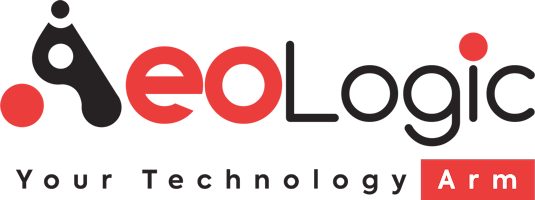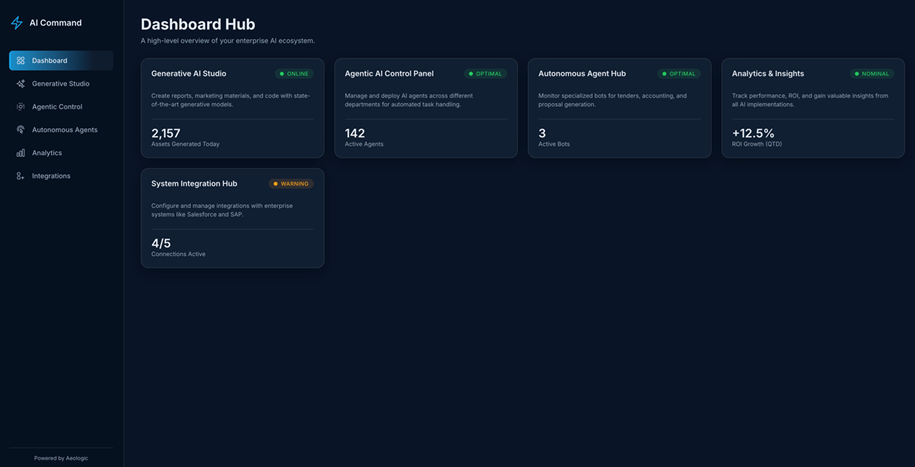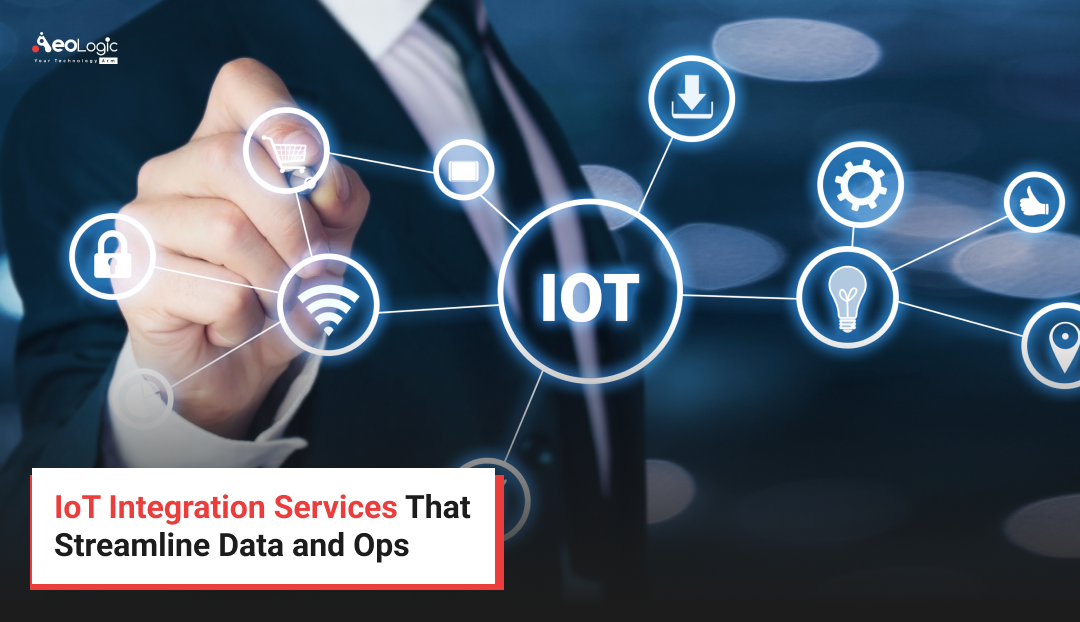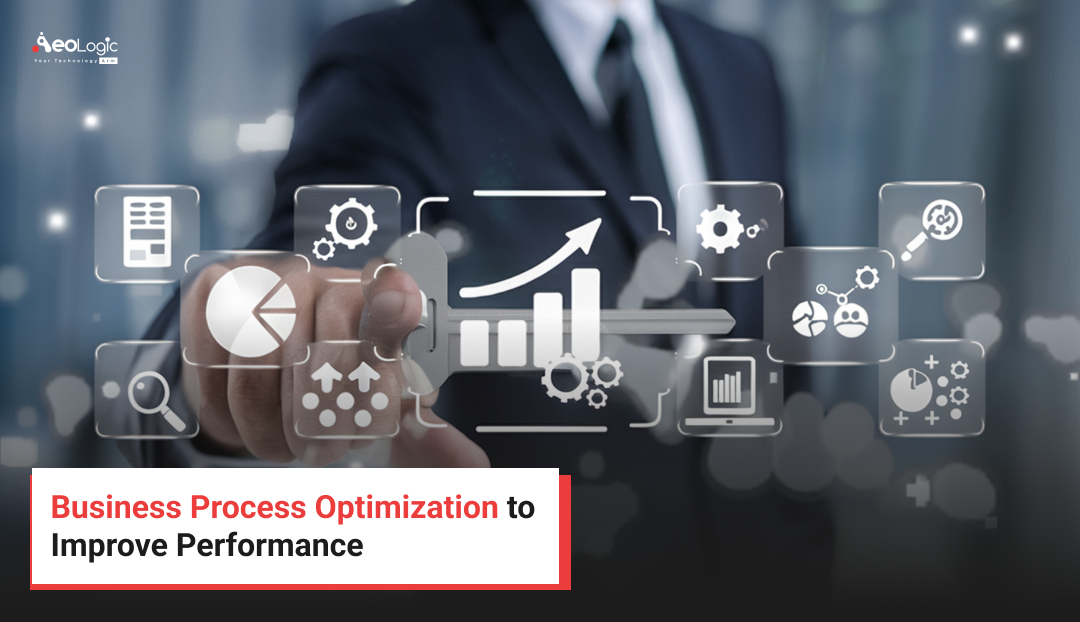The world of artificial intelligence is moving at a breathtaking pace, isn’t it? Just when we thought we had a handle on what AI could do, a new wave of innovation sweeps over us, redefining the very essence of intelligent systems. We’re not talking about simple automation anymore. We’re talking about a profound AI transformation that’s already reshaping industries and will continue to do so in ways we’re only just beginning to grasp.
This isn’t a distant future; it’s happening right now, driven by three powerful pillars: Generative AI (Gen AI), Agentic AI, and Autonomous AI. These aren’t just buzzwords; they represent a fundamental shift in how intelligent systems operate, offering unprecedented opportunities for innovation and growth across every sector. If you’re looking to navigate this complex yet exciting landscape and truly achieve the best results, understanding these advancements is absolutely critical.
Understanding the Core Pillars of Advanced AI
To truly appreciate the AI transformation underway, let’s break down these three revolutionary concepts. Think of them as building blocks, each adding a unique layer of intelligence and capability to our systems.
Generative AI (Gen AI): Creativity Unleashed
Remember when AI was primarily about analysing data and making predictions? Well, Generative AI has flipped that script entirely. Gen AI refers to AI systems that can create new, original content – not just processing existing information. This content can take many forms: compelling text, stunning images, innovative product designs, functional code, even realistic audio or video. It’s like having an infinitely creative assistant at your fingertips.
So, how does it work its magic? At its heart, Gen AI leverages advanced machine learning techniques, particularly deep learning, often powered by massive neural networks known as Large Language Models (LLMs). These models are trained on colossal datasets, allowing them to learn intricate patterns, styles, and relationships within the data. Once trained, they can then generate entirely new outputs that are coherent, relevant, and often surprisingly human-like. For businesses, this means an unprecedented ability for content creation, ideation, synthesis, and hyper-personalization.

The enterprise applications of Gen AI are already vast and continue to expand daily:
- Marketing and Content Creation: Imagine instantly generating personalized marketing campaigns, drafting compelling ad copy, creating hundreds of unique product descriptions for e-commerce, or even designing visual assets tailored to individual customer segments. Gen AI makes this a reality, boosting marketing efficiency and relevance.
- Product Design and Innovation: From generating novel design concepts to simulating performance characteristics, Gen AI can accelerate the ideation and development phases for new products.
- Software Development: Developers can use Gen AI for code generation, suggesting improvements, debugging, and even translating code between different programming languages. This significantly speeds up development cycles.
- Customer Service: Beyond simple chatbots, Gen AI can power dynamic FAQ generation, provide personalized and empathetic responses to complex queries, and even summarize customer interactions for human agents. This leads to a smoother customer experience.
- Data Augmentation and Synthesis: For businesses with limited data, Gen AI can create synthetic datasets that mimic real-world data, enabling more robust training of other AI models.
Agentic AI: The Intelligent Executor
While Gen AI focuses on creation, Agentic AI introduces the concept of intelligent execution. These are AI systems designed not just to understand or generate, but to act autonomously towards a defined goal, making decisions and taking actions within dynamic environments. Think of them as highly capable digital employees who can think through a problem, plan a series of steps, and then execute those steps, adapting as needed. This is a significant leap beyond traditional automation, which typically follows pre-programmed rules without much flexibility.
The key characteristics of Agentic AI include being goal-oriented, possessing robust planning capabilities, making intelligent decisions, interacting seamlessly with their environment (digital or physical), and continuously learning from feedback to refine their performance.
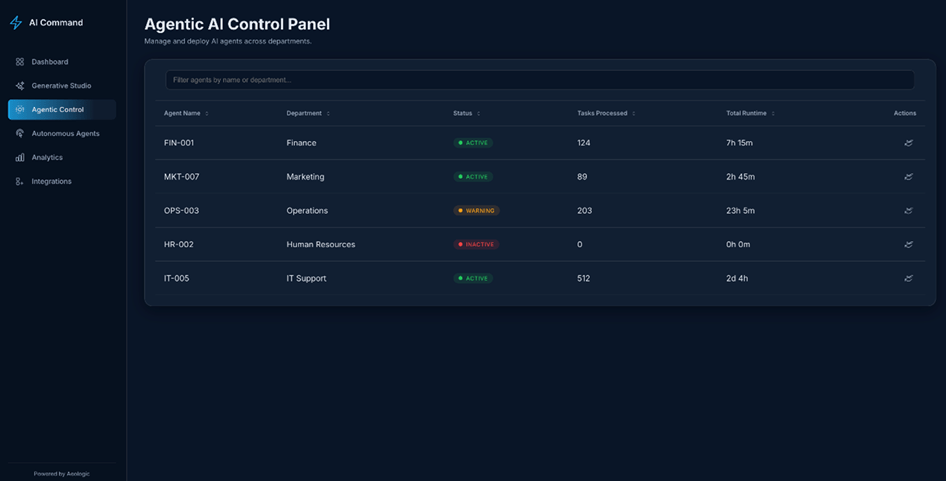
For enterprises, Agentic AI holds immense promise for streamlining operations:
- Automated Project Management and Task Delegation: An Agentic AI could break down a large project into smaller tasks, assign them to different teams or even other AI systems, track progress, and reallocate resources as needed.
- Supply Chain Optimization: Imagine an AI agent dynamically rerouting shipments to avoid delays, managing inventory levels in real-time based on demand fluctuations, or even negotiating with suppliers to secure better deals.
- Personalized Sales and Lead Nurturing: AI agents can engage with potential customers, qualify leads, provide tailored product information, and even schedule follow-up appointments, all while adapting their approach based on the prospect’s responses.
- Autonomous Fraud Detection and Response: Beyond flagging suspicious transactions, an Agentic AI could automatically initiate investigations, freeze accounts, and notify relevant authorities, minimizing damage in real-time.
- Complex Workflow Automation: While Robotic Process Automation (RPA) handles repetitive tasks, Agentic AI can manage intricate, multi-step workflows that require dynamic decision-making and interaction with various systems. This significantly frees up employees to focus on bigger projects.
Autonomous AI: The Self-Governing Ecosystem
Autonomous AI takes the concepts of Gen AI and Agentic AI to the next level, envisioning entire systems or ecosystems capable of operating independently for extended periods, managing complex processes, and adapting to unforeseen circumstances without continuous human intervention. It’s about creating self-governing intelligent environments, often involving multiple collaborating AI agents.
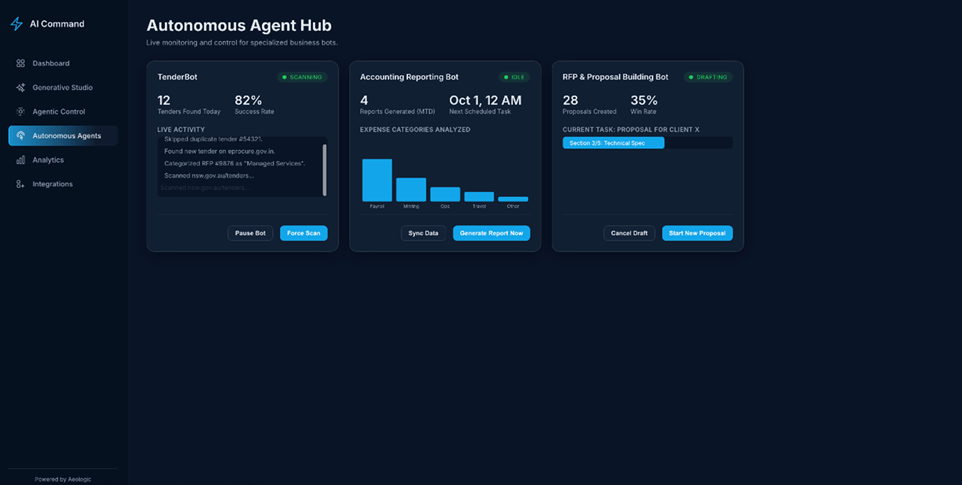
The hallmarks of Autonomous AI include self-regulation, self-healing capabilities (identifying and fixing issues without human help), continuous learning and adaptation, the emergence of complex behaviours from simpler interactions, and system-level optimization towards overarching goals.
The implications for businesses are nothing short of revolutionary:
- Smart Factories and Industrial Automation: Fully autonomous production lines that self-optimize for efficiency, detect and resolve machinery malfunctions, and adapt production schedules to real-time demand.
- Self-Optimizing IT Infrastructure (AIOps): AI systems that monitor networks, servers, and applications, predict outages, automatically deploy patches, and reconfigure resources to maintain optimal performance and security. This helps businesses to stay ready to change and make their systems better.
- Autonomous Logistics and Delivery Systems: Self-driving fleets managing complex delivery networks, optimizing routes, and handling unexpected obstacles without human oversight.
- Next-Generation Customer Experience Platforms: End-to-end self-service systems where customers can resolve complex issues, receive personalized support, and even have products or services delivered or configured autonomously based on their needs.
- Predictive Maintenance with Autonomous Remediation: AI identifies potential equipment failures before they occur and then autonomously schedules and executes necessary maintenance, minimizing downtime.
The Synergy: How These AIs Intersect and Amplify Each Other
The true power of this AI transformation lies not in each pillar individually, but in their seamless integration and synergy. Think of it this way:
- Generative AI provides the “brain”: It’s responsible for producing novel content, insights, and solutions. It generates the ideas, the narratives, the creative outputs.
- Agentic AI provides the “hands”: It takes the ideas from Gen AI and turns them into action, executing tasks, making decisions, and interacting with the world to achieve specific objectives.
- Autonomous AI provides the “nervous system”: It orchestrates the entire system, ensuring that multiple Gen AI and Agentic AI components work together harmoniously, self-managing, and optimizing the overall performance towards a larger goal.
Let’s look at some examples of this combined power in action:
- Imagine a marketing department. Gen AI could generate highly personalized marketing content – ad copy, email sequences, social media posts – tailored to individual customer segments. Then, an Agentic AI could dynamically deploy these campaigns across various channels, optimizing bid strategies and targeting in real-time based on performance metrics. Finally, an Autonomous AI system could oversee the entire marketing ecosystem, identifying emerging trends, allocating budgets across different campaigns, and even suggesting entirely new product lines based on market insights generated by Gen AI.
- Consider product development. Gen AI could create a multitude of innovative product designs based on desired specifications. An Agentic AI could then simulate the performance of these designs, identify potential flaws, and even generate modifications. The entire production lifecycle, from sourcing raw materials to manufacturing and delivery, could then be managed by an Autonomous AI, which optimizes supply chains, manages inventory, detects anomalies on the production line, and even handles unforeseen disruptions without human intervention.
This integrated approach means companies can do more with their time.
The Transformative Impact on Intelligent Systems
The synergistic deployment of Generative AI, Agentic AI, and Autonomous AI is driving an unprecedented AI transformation, leading to profound impacts across every aspect of business operations and intelligent systems:
- Unprecedented Efficiency and Productivity: These AI systems can automate complex, time-consuming tasks at a scale previously unimaginable, freeing up human capital to focus on strategic initiatives, creativity, and complex problem-solving. This directly translates to significant cost savings.
- Hyper-Personalization at Scale: From tailored marketing messages to bespoke customer service interactions and customized product offerings, these AIs enable businesses to deliver a truly individualized experience to millions of customers simultaneously.
- Enhanced Decision-Making: By rapidly processing vast amounts of data, generating insights, and running predictive analytics, AI provides real-time, data-driven intelligence that enables faster, more accurate, and more strategic decision-making. This helps businesses make better choices faster.
- Continuous Innovation: The ability of Gen AI to rapidly prototype ideas and the capacity of Agentic and Autonomous AI to test and iterate quickly means businesses can innovate at an accelerated pace, bringing new products, services, and operational efficiencies to market faster.
- New Business Models and Revenue Streams: These advanced AI capabilities are not just optimizing existing processes; they are enabling entirely new types of services and products, opening previously inaccessible revenue opportunities.
- Sharper Competitive Edge: Companies that successfully adopt and integrate these AI technologies will gain a significant competitive advantage in today’s fast-moving market by being more agile, efficient, innovative, and customer centric.
Navigating the Challenges of Advanced AI Adoption
While the promise of this AI transformation is immense, it’s crucial to acknowledge and prepare for the challenges that come with adopting such sophisticated technologies. A well-thought-out plan is essential to harness the benefits while mitigating potential pitfalls.
- Data Readiness: Advanced AI models, especially generative ones, are incredibly data hungry. They require not just large datasets but also clean, well-structured, and representative training data. Poor data quality will inevitably lead to poor AI performance.
- Integration Complexity: Integrating new AI systems, particularly autonomous ones, with existing legacy IT infrastructure can be a significant hurdle. Seamless data flow and interoperability are paramount.
- Ethical Considerations & Bias: AI models learn from the data they are fed. If that data contains biases (e.g., historical biases in hiring or lending), the AI will perpetuate and even amplify those biases, leading to discriminatory outcomes. Ensuring fairness, transparency, and accountability in AI decision-making is a critical ethical challenge.
- Data Privacy and Security: Working with vast amounts of sensitive enterprise and customer data introduces significant data privacy and security risks. Businesses must implement robust encryption, access controls, and regular audits to safeguard information. Compliance with regulations like GDPR and CCPA is non-negotiable.
- Intellectual Property Disputes: When AI generates new content or designs, questions of intellectual property ownership can arise. Clear policies and legal frameworks are needed to navigate these complexities.
- Talent Gap: The successful implementation and management of advanced AI systems require specialized skills in areas like data analysis, machine learning engineering, natural language processing (NLP), and MLOps. A significant talent gap exists, making it challenging for companies to build internal capabilities.
- Regulatory Compliance: The regulatory landscape for AI is still evolving. Businesses must stay abreast of new laws and guidelines, especially concerning data usage, ethical AI, and liability for autonomous systems.
Aeologic: Your Partner in AI Transformation
This journey into advanced AI, encompassing Generative AI, Agentic AI, and Autonomous AI, is complex, but you don’t have to navigate it alone. This is where a strategic partner like Aeologic comes in. We understand that embracing this AI transformation isn’t just about adopting technology; it’s about fundamentally reshaping your business for the future. We can help you achieve the best results by providing comprehensive support across the entire AI lifecycle.
Our expertise spans the entire AI ecosystem: We possess a deep understanding of the nuances of Gen AI, Agentic AI, and Autonomous AI, recognizing how each can be leveraged to solve specific business problems and create new opportunities.
We offer
strategic AI consulting that begins with understanding your unique business needs and setting clear, measurable objectives. We don’t just push technology; we help you identify the most impactful use cases, whether it’s enhancing customer experience, streamlining operations, or fostering innovation.
With our capabilities in
custom AI development, we can build tailored AI solutions that integrate seamlessly with your existing systems, ensuring maximum efficiency and minimal disruption. This isn’t a one-size-fits-all approach; it’s about crafting solutions that perfectly fit your operational realities.
Crucially, we emphasize data management and infrastructure. We understand that a strong data foundation is paramount for any successful AI project. We help you establish secure data pipelines, ensure data quality, and set up the robust infrastructure needed to train and deploy advanced AI models effectively. This makes it easier for your business to get better and move up.
Navigating the ethical and compliance landscape is critical. We provide guidance on ethical AI and compliance, helping you implement best practices for data privacy, security, and responsible AI deployment, ensuring you meet all regulatory requirements and maintain customer trust.
Our support extends to implementation and training, providing end-to-end assistance from pilot projects to full-scale deployment. We also help your teams upskill, ensuring they are ready to work alongside these new intelligent systems and extract maximum value from them.
Finally, our focus is always on ROI (Return on Investment). We work with you to define clear metrics and continuously monitor performance to ensure that your AI investments are delivering tangible, measurable business value in terms of cost savings, increased efficiency, and enhanced revenue streams.
Conclusion: Embracing the Intelligent Future
The rapid evolution of Generative AI, Agentic AI, and Autonomous AI is not just a technological shift; it’s a paradigm change that promises to redefine how businesses operate and how intelligent systems interact with our world. These technologies are poised to deliver unprecedented levels of creativity, efficiency, and autonomy, making the customer experience better and work run more smoothly inside the company.
Embracing this
AI transformation is no longer optional for businesses seeking a competitive advantage in today’s fast-moving market. However, successful adoption requires a strategic, human-centric approach that carefully considers the opportunities alongside the inherent challenges, particularly around data readiness, ethical implications, and regulatory compliance.
By partnering with experts who understand the intricacies of this advanced AI landscape, like Aeologic, you can confidently navigate these complexities, unlock the full potential of these transformative technologies, and shape a truly intelligent future for your enterprise. Let’s build tomorrow’s intelligent systems, together.
Frequently Asked Questions
1. What is the core difference between Generative AI, Agentic AI, and Autonomous AI?
Generative AI focuses on creating new content like text or images from learned patterns. Agentic AI is designed to act autonomously towards specific goals, making decisions and executing tasks in dynamic environments. Autonomous AI represents self-governing ecosystems where systems operate independently, managing complex processes and adapting without constant human intervention, often involving multiple agents.
2. How do these three advanced AI types work together in a business setting?
Generative AI provides the “brain” by creating content and insights, Agentic AI acts as the “hands” for executing actions and making decisions, and Autonomous AI serves as the “nervous system” by orchestrating, self-managing, and optimizing the entire system. This synergy enables unprecedented efficiency, personalization, and continuous innovation.
3. What are some common business applications of Agentic AI?
Agentic AI can be used for automating project management and task delegation, optimizing supply chains through dynamic planning, personalizing sales and lead nurturing, enabling autonomous fraud detection and response, and automating complex workflows beyond simple robotic process automation (RPA).
4. What are the main benefits of adopting Autonomous AI for enterprises?
Autonomous AI leads to significant benefits such as self-optimizing IT infrastructure (AIOps), managing smart factories and industrial automation, enabling autonomous logistics, and creating next-generation customer experience platforms with end-to-end self-service. It allows for continuous operation, self-healing, and system-level optimization.
5. What are the primary challenges businesses face when implementing advanced AI like Agentic or Autonomous AI?
Key challenges include ensuring data readiness and quality, managing the complexity of integrating AI systems with existing infrastructure, addressing ethical concerns like bias in outcomes, protecting data privacy and security, navigating intellectual property disputes, and bridging the talent gap for specialized AI skills.
5. How can businesses ensure data privacy and security when using Generative, Agentic, or Autonomous AI?
To ensure data privacy and security, businesses must implement strong data governance rules, use encryption, set up secure access controls, conduct regular system audits, and provide employee training on data safety best practices. Adhering to regulatory compliance is also crucial for maintaining trust and protecting sensitive information.

Manoj Kumar is a seasoned Digital Marketing Manager and passionate Tech Blogger with deep expertise in SEO, AI trends, and emerging digital technologies. He writes about innovative solutions that drive growth and transformation across industry.
Featured on – YOURSTORY | TECHSLING | ELEARNINGINDUSTRY | DATASCIENCECENTRAL | TIMESOFINDIA | MEDIUM | DATAFLOQ
